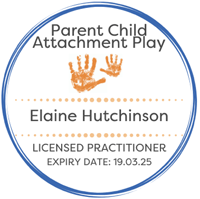Following on from my last two articles, this will explore a few more of the tools and techniques we use in therapy that often don’t feature as predominately as tools like sand, clay and drawing.
Superhero Play
Following on from role play, in the last article, I thought I’d look at superhero play in more depth as it is a very common theme in the studio.
Superhero play is a great way of allowing clients to address psychological problems, real-life dangers and the issues of problem-solving, alter ego and their ideas around personal protection, belonging and death (superheroes rarely die). Sometimes the play is also around justice, conflict, revenge, secrets, identity, internal conflicts, power, control and fantasy or magic.
Self-transformation through role-playing helps clients with executive brain functioning, especially their ability to shift attention during tasks, making appropriate moral judgements, delayed gratification, compassion and other pro-social activities.
All role-play, and particularly superhero play can help clients with anxieties, fears and phobias, trauma, adoption and attachment issues.
Puppets
Many of the benefits of role-play cross over into puppet play, including re-enacting traumatic or troubling events, expressing feelings, overcoming inhibitions and trying out new, adaptive behaviours. Like masks, puppets provide a layer of safety and protection for the client and they often choose (or make) a puppet they can easily identify with.
Through working with puppets, clients can explore their feelings without fear of judgement as it is the puppet, not them that is speaking or acting. This allows clients to express feelings that often have a value judgement attached to them, such as anger, or act out troublesome experiences such as sibling rivalry, domestic violence or abuse where they might fear reprisals for sharing events or feelings.
Puppets can also help a client work through and process an event that is yet to happen such as a hospital visit or an expected bereavement.
Dance and Movement Play
As well as being fun, dance and movement are an age-appropriate and (for many clients) non-threatening ways to play. Whether it is wacky dancing, stomping like an elephant, or air painting with a scarf, dance and movement can help reduce depression and anxiety by elevating a client’s endorphin levels, increase their mobility and help them to express themselves without words.
For clients who are hyperactive or find managing their behaviour challenging, dance and movement (as well as other physical activities) can help reduce their level of physical arousal.
Music Play
Music play helps clients with positive emotions, creative thinking, self-expression, self-esteem, executive functioning, competence, choice, control and much more.

For clients with ASD, music can help with expressing emotions and social responsiveness. Music can also benefit clients who are anxious or non-verbal and like many other tools in the therapy room, it can help clients who have developmental delays or who struggle with social skills.
Studies have also shown that music play helps clients with spontaneous co-operation and helping behaviours, social interactions and self-regulation.
(Yet more ideas to follow next week!)
If you have any questions, please feel free to drop me an email:






